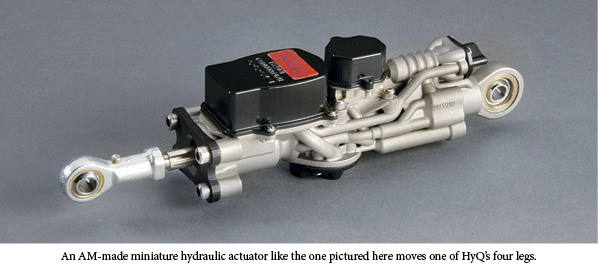Hydrostatic Gear Drives and Evolving Electrohydraulic Applications
 By Jon Frey, Head of Engineering Systems and Solutions, Bosch Rexroth
By Jon Frey, Head of Engineering Systems and Solutions, Bosch Rexroth
When faced with the opportunity to develop a circuit or system design, application engineers can choose from a mechanical, electric, or hydraulic solution. But what if the desired outcome does not fit neatly in one of these three options, or if the application requires linear movement?
Combining electric drive content with mechanical or hydraulic components has been accomplished successfully for many years. However, evolving requirements for compactness, energy efficiency, dynamics, accuracy, load-carrying ability, and other application-specific demands may necessitate more than bundling existing components to achieve a classic ball-screw/planetary-screw drive or power unit-satellite manifold-actuator solution.
These three independent technologies offer attractive solutions for state-of-the-art applications – and there are champions and advocates for each. However, hydrostatic gear drives combine the strengths and unique attributes of electrics and hydraulics to achieve a broader solution for the circuit or system designer.
The hydrostatic gear drive or self-contained hydraulic actuator combines existing technologies into unique, compact, dynamic, efficient configurations that can be designed for a singular application or a serialized solution. A hydrostatic gear drive may offer unique attributes that would be more difficult to achieve applying electromechanical drives alone.
One such attribute may be found within the definitions of hydrostatic gear drives and primary controlled actuators.
A fundamental precondition begins with an electrical drive – one where electrical energy input is converted to rotational output. A second condition is a method to convert rotational output into a linear movement, thereby determining a primary controlled actuator.
Using these two preconditions alone, the resulting solution could be either electromechanical or electrohydraulic and help to serve the application’s purpose. Either result could be described as a gear drive by converting rotary into linear movement.
However, other specific attributes become significant differentiators for a hydrostatic gear drive in their ability to offer a variable transmission via a differential actuator ratio and varying pump displacement. Application of a mechanical drive requires selection of pitch, diameter, and length, to name a few.
The electromechanical drive manufacturer prescribes data on the individual limits of these three attributes, and the circuit designer/solution provider elects the most relevant compromise to achieve the desired function. Enter the hydrostatic gearbox.
Differential cylinders can be used in regenerative mode to achieve equal extend or retract speeds; they can also opt out of regeneration mode and have full piston area available to generate force. This can result in a hi-low transmission of sorts, speed, or force and changeable, as necessary, in the circuit.
Conversely, an electromechanical drive may necessitate selecting a diameter and a pitch to achieve the most appropriate compromise. Beyond the actuator, the hydrostatic gear drive may also incorporate a variable displacement pump in addition to the variable speed
electric drive.
Using a variable displacement pump allows electric motor rotation to remain within desirable power bands through varying pump output flow to achieve actuator speed. Hydrostatic gear drives offer additional variants, since pumps can be combined to achieve greater flow outputs and conserve installation space requirements. Pumps can be fixed, variable, or a combination of displacements.
Actuators can be single-rod, double-rod, tandem, multiarea, or even a motor if, for example, the linear output is a conveyor belt. Hydrostatic gear drives offer greater load-holding ability in applications where a force dwell time is required for setting, curing, or clamping. The attributes of differential area actuators combined with variable displacement pump(s) provide circuit and system designers with an effective hydrostatic gear drive capability not easily matched with only electric or electromechanical drives.
Bundling hydrostatic gear technology within a self-contained hydraulic actuator can provide a fluid power solution that is scalable, configurable, dynamic, efficient, space-saving, and not easily displaced via other traditional solutions.
Hydrostatic gear drives can be integrated. For example, drive packaging can minimize fluid volume, connections, tube lengths, and so on. They can also be distributed via a hydraulic pump and manifold being separated from the hydraulic cylinder.
In either scenario, integrated or distributed, the designer eliminates unnecessary fluid volumes, seeks to reduce size, and enhances efficiency while the hydraulic circuit is closed with no atmospheric tank. A truly self-contained hydraulic actuator or hydrostatic gear drive requires no external fluid connections. From the user’s perspective it may be a complex electrical device, since it has hydraulic fluid in it, and the only external connections are electrical. As hydroelectric applications evolve, the hydrostatic gear drive offers circuit and systems designers a powerful tool to create successful solutions.







